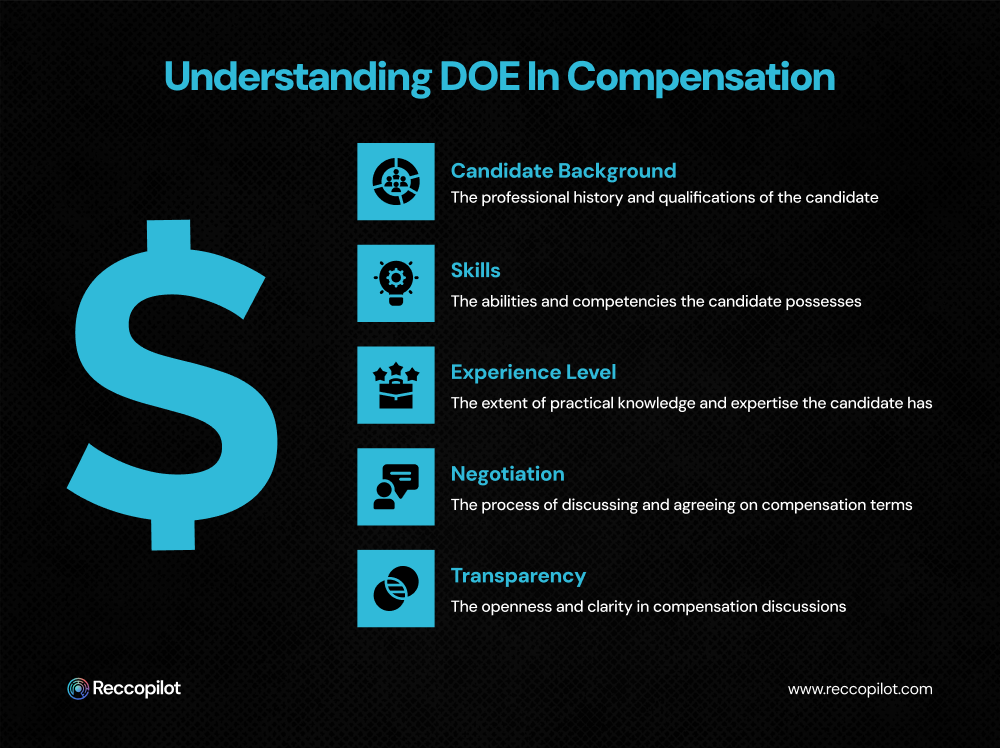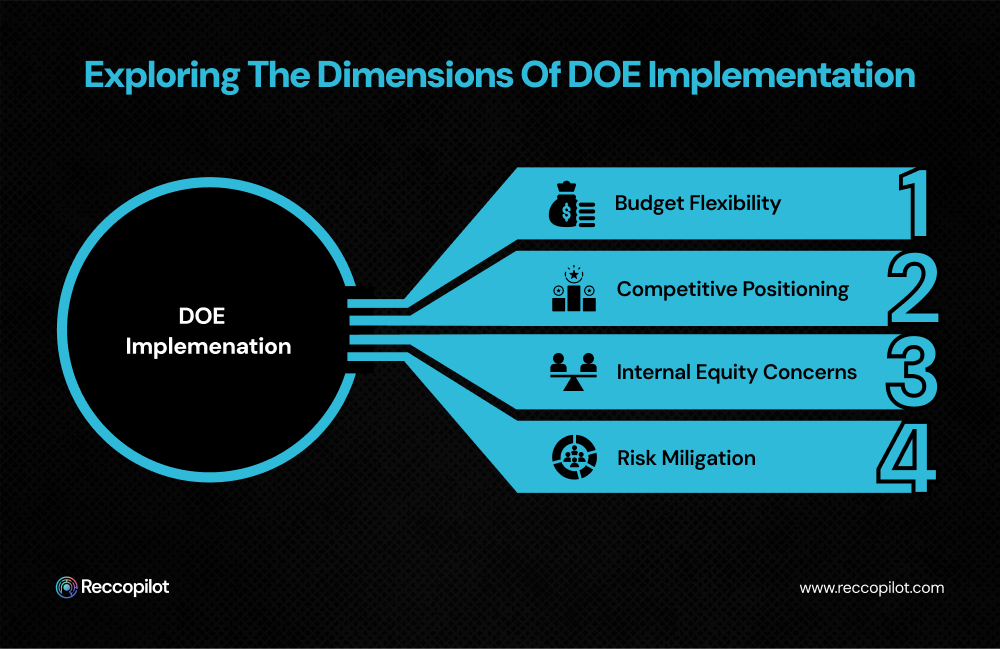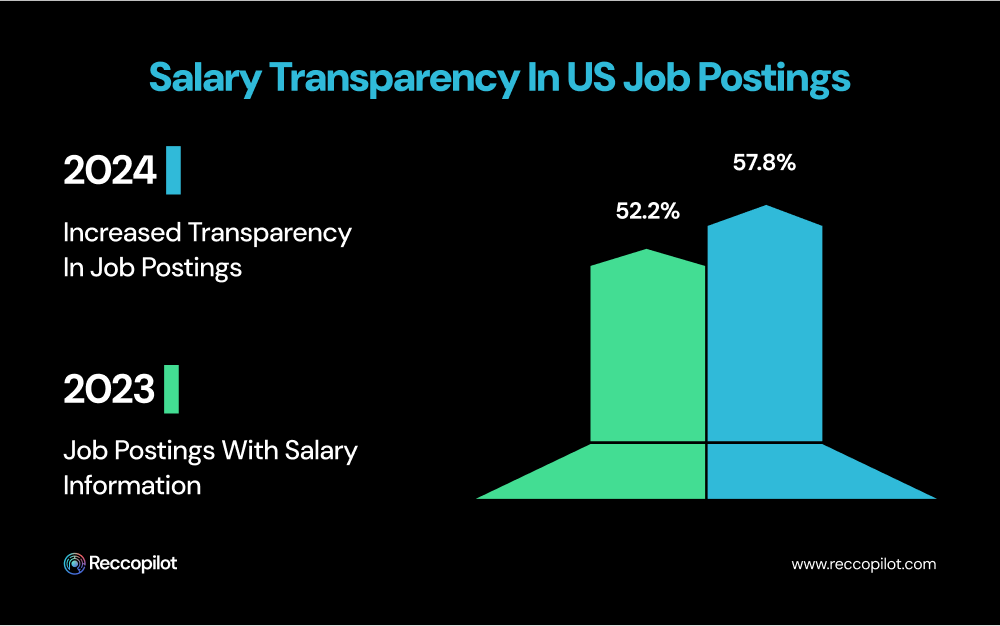Understanding DOE Pay Meaning in Modern Recruitment
Read Time
10 minutes
Updated On
October 23, 2025
.jpeg)
Ruchi Kumari
Content & Thought Leadership

Salary transparency has shifted from being a nice-to-have to a clear expectation in modern hiring. Yet many organizations continue to rely on "DOE pay" (Depends on Experience) when posting salary ranges, creating unnecessary friction in the recruitment process. Understanding the doe pay meaning is crucial, for HR professionals, talent acquisition specialists, and recruiters navigating an increasingly candidate-driven market, it's time to reconsider this approach.
The modern workforce demands clarity, and candidates are walking away from opportunities that lack transparency. If you're still using DOE as a default response to salary discussions, you're not just missing out on top talent, you're actively damaging your employer brand. This guide will show you how to flip the script on DOE and transform it from a recruitment roadblock into a strategic advantage.
DOE, or "Depends on Experience," is a compensation approach where salary ranges are intentionally kept vague, with the final offer determined by a candidate's background, skills, and experience level. Many professionals still ask "what does DOE pay mean" or wonder about the DOE meaning when they encounter it in job postings. The meaning of DOE salary is straightforward - it indicates that compensation will vary based on the candidate's qualifications and experience.
Understanding what does pay DOE mean is crucial for modern recruiters. The DOE pay meaning essentially signals to candidates that no specific salary range has been established, leaving compensation entirely open to negotiation.

When you see "salary D.O.E meaning" or encounter DOE in salary discussions, it typically means the employer hasn't committed to transparent compensation bands.
Traditional recruiters have used DOE for decades, believing it provides flexibility in negotiations and prevents candidates from anchoring on specific numbers. But grasping what does compensation DOE mean in today's market reveals why this approach is becoming problematic.
Budget Flexibility: Companies want room to negotiate based on the candidate's qualifications without committing to specific figures upfront. This approach allows them to potentially save money on less experienced candidates while still having headroom for exceptional talent.
Competitive Positioning: Some employers believe that revealing salary ranges gives competitors insights into their compensation strategies or makes it harder to attract candidates who might otherwise consider lower offers.

Internal Equity Concerns: HR teams worry that posting specific ranges might create internal conflicts if existing employees discover new hires are being offered different compensation for similar roles.
Risk Mitigation: DOE serves as a safety net for recruiters who haven't fully analyzed market rates or established clear compensation bands for specific positions. For an AI Recruiter Agent or traditional recruiter alike, understanding what does DOE for salary mean is key to navigating these challenges.
While these reasons seem logical on paper, they reflect an outdated approach to talent acquisition that prioritizes organizational convenience over candidate experience.
The traditional DOE approach creates significant challenges in today's recruitment landscape:
Candidate Frustration: Modern job seekers expect transparency from the outset. When faced with vague compensation information, top candidates often assume the worst about company culture and compensation philosophy. This is particularly problematic when competing against organizations that provide clear salary ranges.
Wasted Resources: Without clear compensation expectations, recruiters spend countless hours in initial screenings only to discover misaligned salary expectations later in the process. This inefficiency impacts both recruiting teams and hiring managers who invest time in candidates who ultimately can't accept the offered compensation.

Reduced Application Quality: DOE postings often attract a wider range of candidates, including many who are either over or under-qualified for the actual compensation budget. This creates more noise in the application pool and makes it harder to identify genuinely suitable candidates.
Employer Brand Damage: In an era where candidates share experiences on platforms like Glassdoor and social media, poor transparency practices can quickly damage an organization's reputation as an employer of choice.
Legal and Compliance Risks: With pay transparency laws being enacted across various jurisdictions, relying heavily on DOE approaches may soon become legally problematic or non-compliant.
Extended Time-to-Fill: The lack of upfront clarity often leads to longer recruitment cycles as candidates and employers navigate multiple rounds of salary discussions that could have been addressed earlier in the process.
The data clearly demonstrates why moving away from traditional DOE pay approaches is critical for modern recruitment success:

Salary Transparency is Rapidly Becoming the Standard: As of September 2024, 57.8% of all US job postings on Indeed contained some salary information, up from 52.2% in September 2023 (Indeed's 2025 US Jobs & Hiring Trends Report). This trend shows that organizations using vague DOE language are increasingly in the minority and at a competitive disadvantage. Understanding the doe pay meaning is more important than ever.
Legislative Pressure is Building: Pay transparency laws are now active in multiple states including California, New York, Washington, Colorado, and Hawaii. New York employers are highly transparent, listing salary information in almost all (97.7%) New York job postings. Organizations that haven't adapted their DOE practices may soon face legal compliance issues as more jurisdictions enact similar legislation.
Candidate Expectations Have Shifted Dramatically: Research shows that 72% of candidates who have a poor experience during the hiring process share that negative experience online or with someone directly (CareerArc). When candidates encounter vague compensation information, it directly impacts their perception of your organization's transparency and trustworthiness. This is why understanding what does DOE for salary mean is essential for recruiters and hiring teams
Sector-Specific Variations Reveal Opportunities: The data shows significant variation across industries. Childcare sector remains the most transparent, with 81.7% of postings listing salary information, while healthcare occupations lag behind. This creates competitive advantages for organizations that embrace transparency in traditionally opaque sectors.

Geographic Impact: Salary transparency grew in 95 of the 110 metropolitan areas analyzed over the past year, indicating this isn't just a coastal phenomenon but a nationwide shift in recruitment practices.
The Business Case is Clear: Organizations in states with pay transparency laws have seen improved compliance and better candidate engagement. Companies that proactively adopted transparent practices report shorter time-to-fill metrics and higher-quality candidate pools. For any AI Recruiter , these insights reinforce the importance of moving beyond vague compensation language.
These numbers paint a clear picture: DOE is becoming an outdated practice that puts organizations at a significant disadvantage in attracting top talent and maintaining competitive recruitment processes.
Transforming your approach to DOE requires a strategic mindset shift from secrecy to transparency:
Develop Clear Compensation Bands: Work with your compensation team to establish specific salary ranges for each role based on market data, internal equity analysis, and budget constraints. These bands should account for different experience levels while still providing clarity to candidates . Rather than wondering what does DOE for salary mean, candidates will have clear expectations from the start.
Create Experience-Based Tiers: Instead of vague DOE statements, develop transparent tiers such as "Entry Level: $65,000-$75,000" or "Senior Level: $95,000-$110,000." This provides the flexibility you need while giving candidates clear expectations about DOE meaning salary ranges.
Lead with Value Proposition: Frame compensation discussions around the total value proposition, including base salary, benefits, growth opportunities, and company culture. This approach helps candidates understand the complete package while justifying your compensation philosophy.

Use Progressive Disclosure: Start with broad ranges in job postings, then narrow down to specific figures as you learn more about each candidate's background and fit. This maintains transparency while allowing for individualized discussions.
Implement Salary Range Validation: Before posting any role, validate your compensation ranges against current market data and ensure they align with your organization's compensation philosophy and budget realities.
Train Your Team: Ensure all recruiters and hiring managers are comfortable discussing compensation openly and can articulate the rationale behind your ranges. This consistency builds trust and credibility with candidates and helps clarify what does compensation DOE mean in real-world hiring conversations.
Several modern AI recruitment agent can support your transition away from traditional DOE pay approaches:

Compensation Analytics Platforms: Tools like PayScale, Salary.com, or Radford help you benchmark positions against market rates and build defensible compensation ranges based on real-time data.
AI-Powered Recruitment: Platforms like Reccopilot streamline the entire hiring process with intelligent candidate matching and automated workflows, helping you implement transparent compensation practices at scale while improving overall recruitment efficiency. These innovations are especially valuable for any AI Recruiter looking to modernize hiring strategies.
ATS Integration: Modern Applicant Tracking Systems can be configured to require salary range inputs for all job postings, ensuring consistency and preventing the default to DOE language.
Candidate Experience Platforms: Solutions that provide salary calculators or compensation insights help candidates self-select appropriately while demonstrating your commitment to transparency.
Market Intelligence Tools: Platforms like Glassdoor for Employers or LinkedIn Talent Insights provide competitive salary data that can inform your range-setting process.
Internal Analytics: Leverage your HRIS data to analyze compensation patterns, identify inequities, and build more strategic approaches to role-based compensation.
Tech Startup Approach: "Software Engineer - $120,000-$150,000 base salary, depending on experience level, plus equity and comprehensive benefits. We're looking for 3-7 years of experience with our tech stack."
Traditional Industry Evolution: "Marketing Manager - $75,000-$90,000 annually. Range reflects experience from mid-level (3-5 years) to senior-level (5-8 years) marketing professionals. Additional consideration for specialized industry experience."
Transparent Tier System: "Sales Representative positions available at multiple levels: Associate Level (0-2 years): $45,000-$55,000 base + commission. Experienced Level (2-5 years): $55,000-$70,000 base + commission. Senior Level (5+ years): $70,000-$85,000 base + commission."
Value-Forward Messaging: "Customer Success Manager - $80,000-$95,000 base salary based on experience, plus performance bonuses, full health coverage, unlimited PTO, and professional development budget. We're seeking someone with 2-6 years of customer-facing experience."
These examples demonstrate how you can maintain flexibility while providing the transparency that modern candidates expect, eliminating confusion about DOE pay meaning in salary discussions.
The recruitment landscape has fundamentally shifted, and clinging to outdated DOE practices is no longer sustainable. Organizations that embrace salary transparency will have significant advantages in attracting top talent, reducing time-to-hire, and building stronger employer brands.
The transition away from traditional DOE approaches requires investment in compensation analysis, process refinement, and team training. However, the benefits, improved candidate experience, more efficient recruitment processes, and enhanced employer reputation, far outweigh the initial effort required.
As next-generation recruiters, your success depends on adapting to candidate expectations and market realities. By flipping the script on DOE, you're not just improving your recruitment process, you're positioning your organization as a transparent, forward-thinking employer that values its people from the very first interaction.
